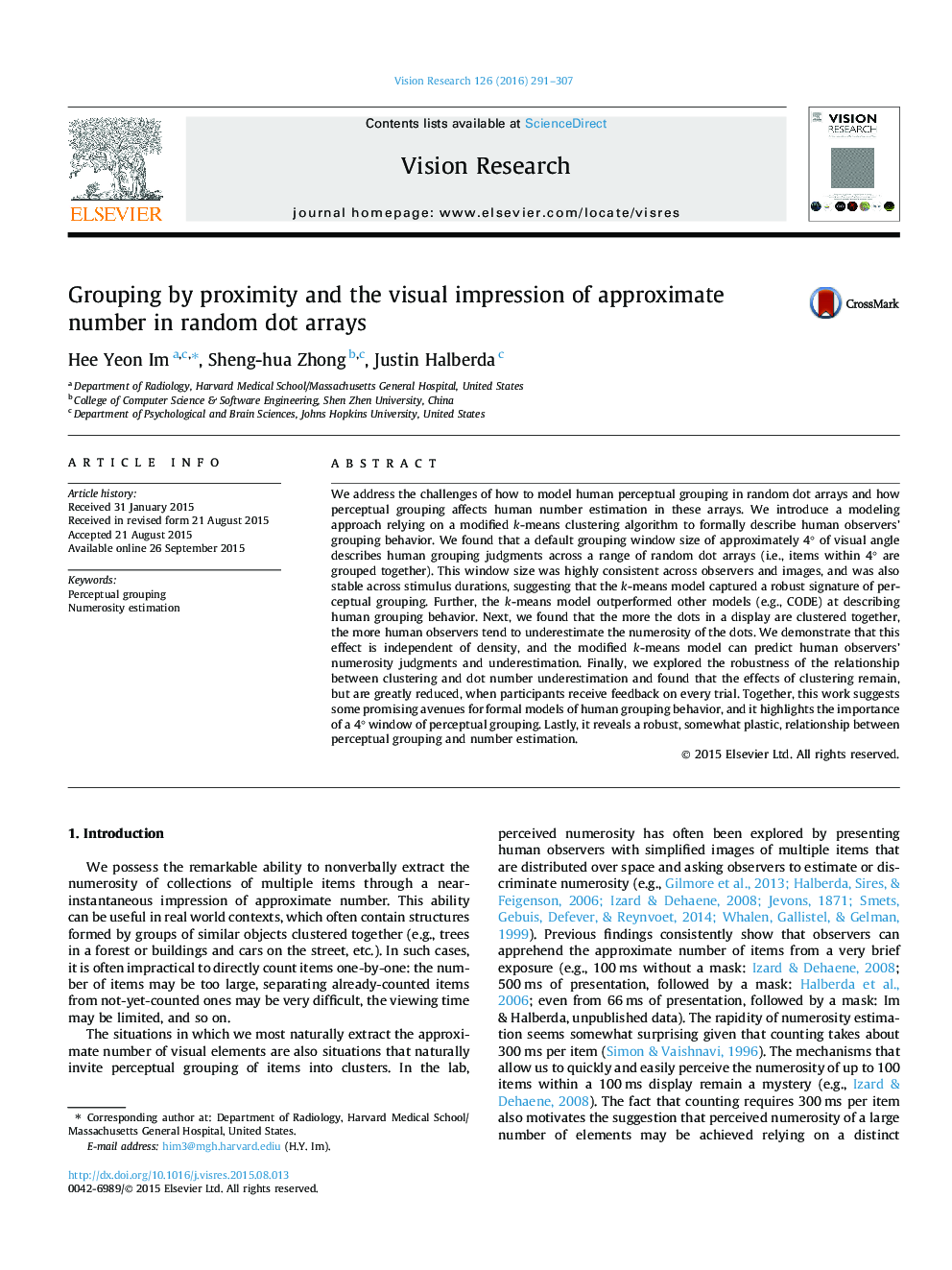| Article ID | Journal | Published Year | Pages | File Type |
|---|---|---|---|---|
| 6202944 | Vision Research | 2016 | 17 Pages |
â¢We introduce a new clustering algorithm to formally describe human grouping behavior.â¢The best-fit estimate of grouping window size was 4° of visual angle.â¢Window size was consistent across different observers, images, and stimulus durations.â¢The model could also predict observers' numerosity judgments and underestimation.â¢Our results reveal the relationship between perceptual grouping and number estimation.
We address the challenges of how to model human perceptual grouping in random dot arrays and how perceptual grouping affects human number estimation in these arrays. We introduce a modeling approach relying on a modified k-means clustering algorithm to formally describe human observers' grouping behavior. We found that a default grouping window size of approximately 4° of visual angle describes human grouping judgments across a range of random dot arrays (i.e., items within 4° are grouped together). This window size was highly consistent across observers and images, and was also stable across stimulus durations, suggesting that the k-means model captured a robust signature of perceptual grouping. Further, the k-means model outperformed other models (e.g., CODE) at describing human grouping behavior. Next, we found that the more the dots in a display are clustered together, the more human observers tend to underestimate the numerosity of the dots. We demonstrate that this effect is independent of density, and the modified k-means model can predict human observers' numerosity judgments and underestimation. Finally, we explored the robustness of the relationship between clustering and dot number underestimation and found that the effects of clustering remain, but are greatly reduced, when participants receive feedback on every trial. Together, this work suggests some promising avenues for formal models of human grouping behavior, and it highlights the importance of a 4° window of perceptual grouping. Lastly, it reveals a robust, somewhat plastic, relationship between perceptual grouping and number estimation.
